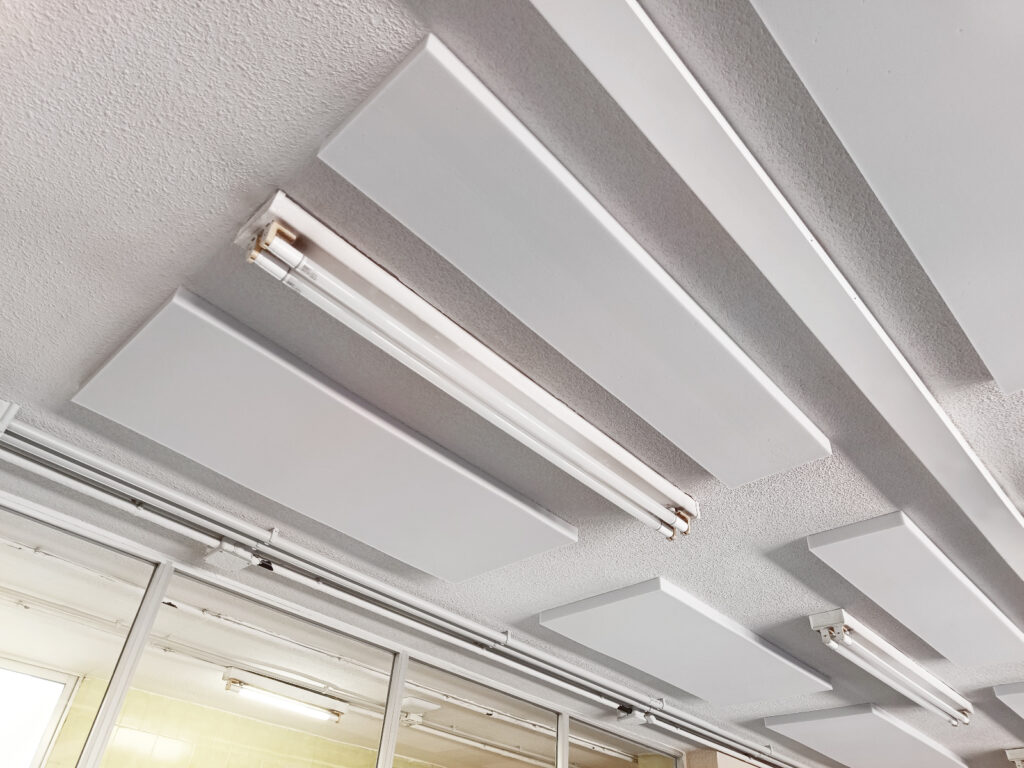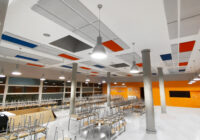In a recently renovated school, we installed Noizen Foam Up acoustic panels from PanelNoise in two specific classrooms: one a conventional classroom and the other a computer lab.
Education is becoming increasingly demanding, which is why creating a conducive learning environment must be a priority. Noise is often a problem in classrooms worldwide, affecting both students and teachers.
How Acoustics Affect Different Types of Classrooms
In traditional classrooms, where verbal explanations and group work are common, acoustics are essential. Poor sound quality can hinder students’ ability to understand lessons, especially for those seated at the back.
In computer labs, the need for acoustic panels is even greater. The constant noise from equipment, such as fans and keyboards, creates a chaotic sound environment that affects students’ concentration. Therefore, acoustic panels are essential to ensure a quiet and effective learning environment.
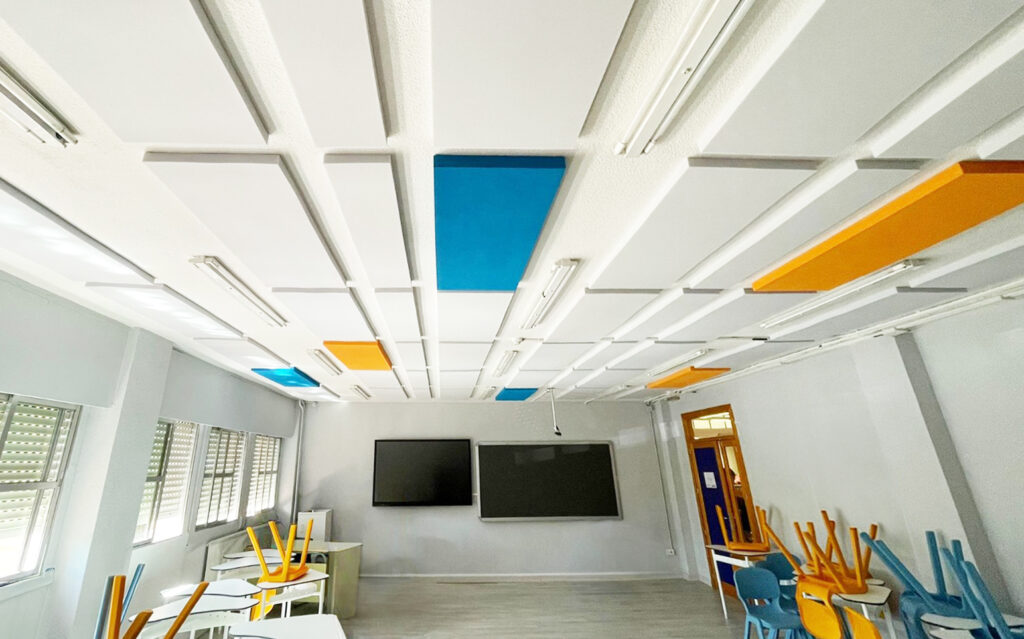
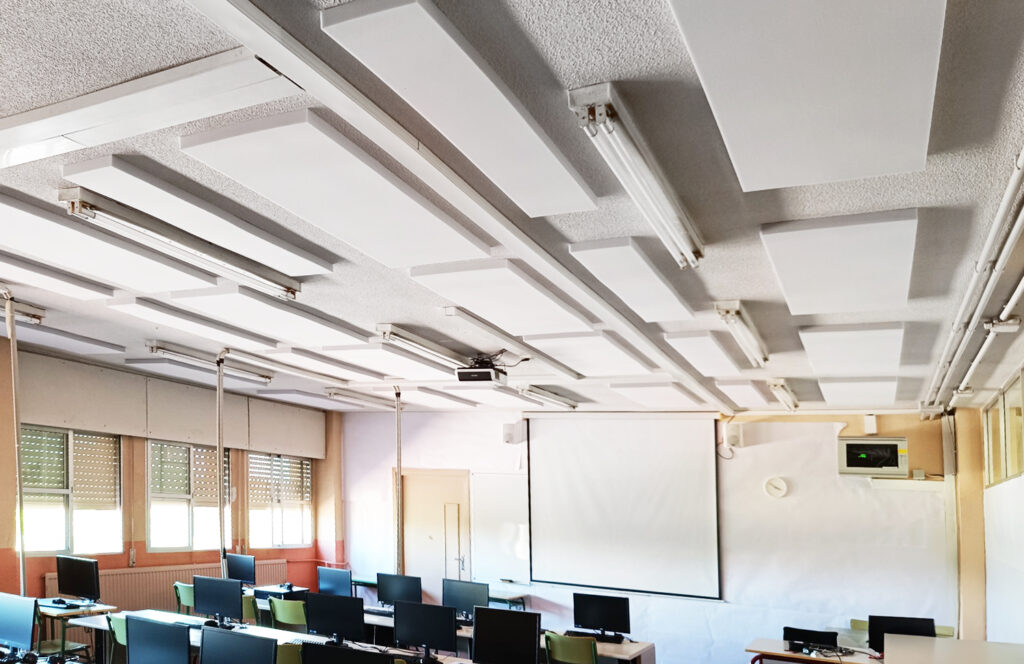
Noizen Foam Up: Acoustic Panels That Improve Sound Quality
The installation of Noizen Foam Up panels on the classroom ceilings significantly improved sound quality by reducing reverberation and absorbing unwanted noise. This intervention not only optimized the classroom experience but also contributed to the overall well-being of the educational community. Implementing solutions like Noizen Foam Up acoustic panels has an immediate impact and also supports long-term quality education.
Fill out our contact form if you know of any classroom that needs acoustic treatment.
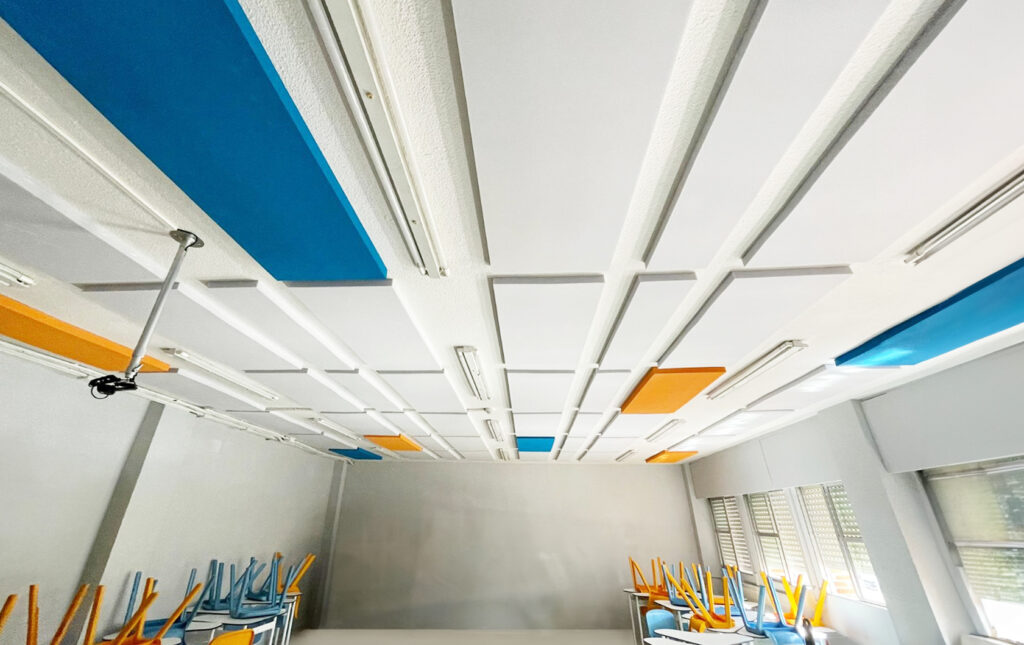
The Importance of Acoustic Control in Educational Institutions
Proper sound management is essential in educational spaces. Numerous studies show that poor acoustic conditions in classrooms can negatively affect academic performance, as the brain must work harder to process information in noisy environments.
- Absorption of Unwanted Sounds: Acoustic panels absorb disruptive noises, such as sounds from electronic equipment, furniture being moved, and loud conversations, creating a quieter environment.
- A Calmer Learning Environment: By reducing unwanted sounds, the classroom becomes a more relaxed and conducive space for study.
- Improved Sound Quality: Reduced reverberation allows the teacher’s voice and classroom discussions to be heard more clearly and understood more easily.
- Reduced Vocal Fatigue for Teachers: Educators can speak at a normal volume without straining, reducing the risk of vocal fatigue.
- Facilitates Group Work: By making communication easier, it fosters a collaborative environment where students can focus better and perform more effectively in academic activities.
- Enhanced Concentration and Academic Performance: By eliminating sound distractions and creating an optimal space for communication, students’ ability to concentrate and learn effectively is enhanced.
